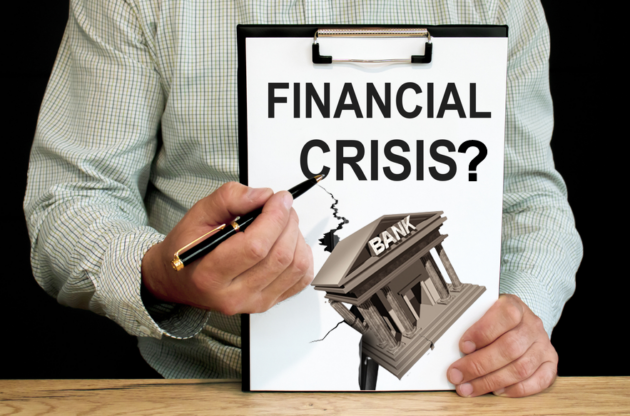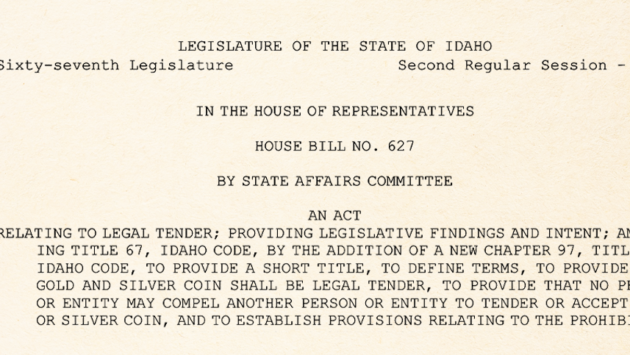
The warning signs were “hiding in plain sight.”
JP Morgan Chase chief Jamie Dimon saw the signs. And following the collapse of Silicon Valley Bank in March, he cautioned:
“The current crisis is not yet over … there will be repercussions from it for years to come.”
Oh, how right he was…
Just five weeks after his dire forecast, First Republic Bank collapsed and claimed the unfortunate record for second-largest bank crash in US history — a record only surpassed by the failure of Washington Mutual in 2008.
Federal regulators seized the bank on May 1. And according to The Wall Street Journal, the regulators have “struck a deal to sell the bulk of its operations to “the biggest bank in the United States”…
… “JPMorgan Chase.”
Again, the warning signs were visible:
Last week, First Republic Bank shares dropped by about 50% following a long, “silent bank run” where customers pulled about $100 billion in deposits during the first quarter of 2023.
WSJ says the bank “teetered for weeks,” and “Employees who stayed watched the bank’s stock crater last week and frantically texted friends about how they feared the bank would go under soon.”
At the time, the Fed and the FDIC (Federal Deposit Insurance Corporation) “declined to comment” on the bank’s perilous position…
But now, to help reassure the public, the US Treasury says, “The banking system remains sound and resilient, and Americans should feel confident in the safety of their deposits and the ability of the banking system to fulfill its essential function of providing credit to businesses and families.”
Perhaps.
However, I can’t help but notice:
Three out of the four most massive bank collapses in United States history have happened in the last 8 weeks.
As you may already know, 25 banks collapsed in 2008…
And according to The NY Times, the three banks that collapsed over the last couple of months “held a total of $532 billion in assets. That’s more than the $526 billion, when adjusted for inflation, held by the 25 banks that collapsed in 2008 at the height of the global financial crisis.”
Of course, nobody knows for certain when or if another bank could collapse.
And it’s possible the crisis may be contained. But I’d say it may be wise to adopt a defensive financial mindset going forward because banking collapses don’t happen in an economic vacuum.
The entire financial system is interconnected.
Problems in one area have the potential to affect another.
And now analysts believe the financial stress may have spread to one of the biggest sectors of the US economy — the commercial real estate market (CRE).
According to Fox Business, Morgan Stanley analysts have concluded:
“The commercial real estate market may be headed for a crash that rivals the 2008 crisis this year.”
In June 2022, an NYU study forecast “large drops in lease revenues, occupancy, lease renewal rates, and market rents in the commercial office sector” would lead to a $453 billion “office real estate apocalypse.”
Why would this affect the banking sector? In part, because small and regional banks hold about 80% of the $20 trillion commercial real estate market’s outstanding debt. And according to the Mortgage Bankers Association, nearly $92 billion in debt for office properties comes due this year… and another $58 billion will come due in 2024.
At the same time, commercial building vacancy rates in most urban areas are in the double-digits.
This puts the regional banking system under stress.
And we may already be seeing signs of serious trouble:
Commercial real estate giant Brookfield recently defaulted on a mortgage for 12 Washington, DC, office buildings totaling $161.4 million. And analysts worry this may be one of the first in a cascade of commercial mortgage loan defaults, which could severely affect the nation’s financial health.
Lisa Shalett, chief investment officer for Morgan Stanley Wealth Management, says the CRE sector decline could be “as much as 40 percent worse than in the Great Financial Crisis.”
Bank of America’s Michael Hartnett says commercial real estate is “a boa constrictor tightly wrapped around the economy.”
And we’re already seeing some of that financial constriction appear in the economy.
The nation’s financial challenges will affect the financial lives of real people with real bills to pay and real hopes for their future.
And with so much turmoil in the economy right now, the only financial asset I see shining in the dark is physical gold.
————————–
Gold has risen more than 24% in the last six months. And it’s only a few dollars away from a record high. So, if you already own gold, smart move. Now may be the best time to fortify your holdings. And if you don’t own gold yet, then I’d say you have three main choices:
- You can read the signs, take in what we’ve discussed today and wait to “see what happens next…”
- You can learn how to help secure your savings and protect your long-term financial future with a FREE copy of our eye-opening Gold Information Kit…
- Or you can get all your questions answered by a highly trained and experienced Gold Specialist by calling 888-529-0399 so you can take action when you’re ready.
Don’t wait. Act now. There’s zero cost or obligation to find out how to help secure your savings and financial legacy with confidence in these volatile and uncertain times.



